Last updated on June 19th, 2022
The Glacier National Park in Montana was established in 1910. It covers more than one million acres and is home to glaciers, mountains, lakes, waterfalls and a remarkable range of flourishing animal and plant life. As a result of its immense diversity, this recreational area is a paradise for explorers and provides something for everyone. It is a haven for individuals looking to enjoy spectacular scenery from a boat or the seat of a car and persons wishing to get more interactive and up close with a climb, a hike or a glacier walk.
50 Interesting facts about Glacier National Park
1. This park is a part of the first international peace park on the globe. The visualization for a park was to celebrate friendship and peace between Canada and the United States.
2. The park is located midway between Vancouver and Calgary and it was established after the transcontinental railway was completed in 1885.
3. The Glacier and Waterton Lakes National Park in Canada were named the Waterton-Glacier International Peace Park in 1932. Nowadays, the parks effortlessly collaborate in their efforts in research, fire management and preservation.
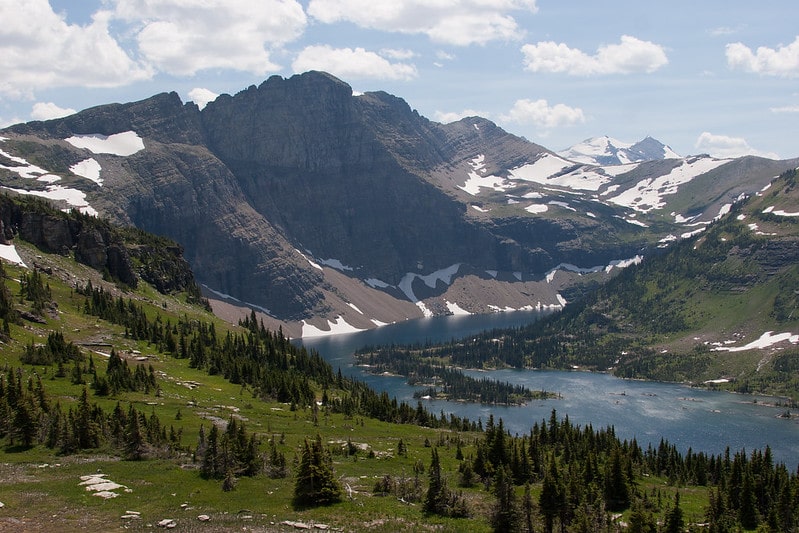
4. The lands on which Glacier National Park is situated were utilized by the Sinixt, Syilx, Secwepemc and Ktunaxa peoples.
5. The Great Northern Railway constructed nine chalets between the years 1910 and 1915. The sites were Belton, St. Mary, Sun Point, Many Glacier, Two Medicine, Sperry, Granite Park, Cut Bank, and Gunsight Lake. Visitors would take a trip by horseback from chalet to chalet to see the park; this used to take several weeks. On average, visitors spent more than a month in the park.
6. The park currently houses 26 named glaciers (larger than 0.1 km2), which is a far cry from the roughly 150 that existed in 1850. Sadly, it is expected that the number will continue this decline as climate changes diminish their size. Of the glaciers remaining, the Harrison Glacier is the largest at 1.6 million square meters.
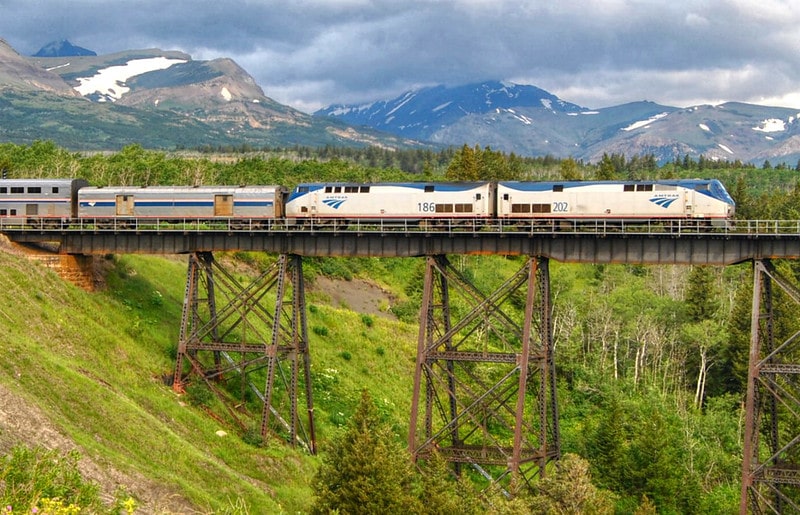
7. The Empire Builder route from Amtrak stops at in East Glacier Park Village at the station, which is a few steps from the entrance of the park. For decades, it has been facilitating a well-liked Empire Builder line seasonal stop, which opens between April and October and serves mainly Glacier National Park visitors.
8. While visiting Glacier National Park, spotting the agile mountain goat will definitely be part of the experience. Due to its perseverance and prevalence in the area, the mountain goat is the official symbol of the park.

9. The goats have made a name for themselves, foraging for food and watching visitors intently from a safe distance. They have special hooves that allow them to climb different terrains quite easily, from ice to rocks.
10. In addition to mountain goats, marmots and bighorn sheep live in the rocky slopes across Logan Pass. This is a hub for many great hikes as well, including Animal Super Heroes Trail, which is suitable for the whole family.
11. The nature trail to Hidden Lake that covers 1 and a half miles is another great hike in the vicinity. Another wonderful place to hike is the western point of Lake St. Mary, a place where trails lead to three magnificent waterfalls.
12. Glacier overlaps the Continental Divide, which allows for extreme weather. This is because the opposing Arctic and Pacific airs join at the Divide, creating a spectacular weather clash. On one occasion, right outside the eastern boundary of the park, in just 24 hours, the temperature dropped 100 degrees.
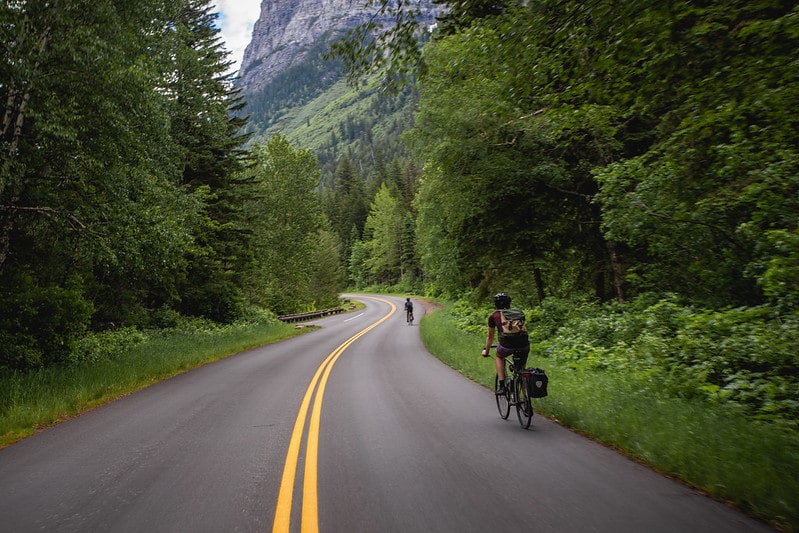
13. Arguably, Going-to-the-Sun Road is among the most iconic land stretches of Glacier National Park. This is a 53 mile-long picturesque drive that opened in 1933 and features some of the most stunning natural views of North America.
14. This famous road is featured in the opening credits of the horror film classic “The Shining.” It has also received a number of unique honors, which include being designated as a Historic Civil Engineering Landmark, a National Historic Place and a National Historic Landmark.
15. Going-to-the-Sun Road crosses the Continental Divide by way of Logan’s Pass, a place that can amass as much as 80 feet of snow during the winter. It covers 50 miles of cascading waterfalls, spectacular glaciers and stunning landscapes and is definitely an vital part of any visit.
16. Glacier National Park visitors can participate in tours in antique red buses referred to as ‘jammers.’ They were introduced to United States National Parks originally in the 1930s to decrease car traffic. This exceptional coach car fleet was modified and restored in 2002.
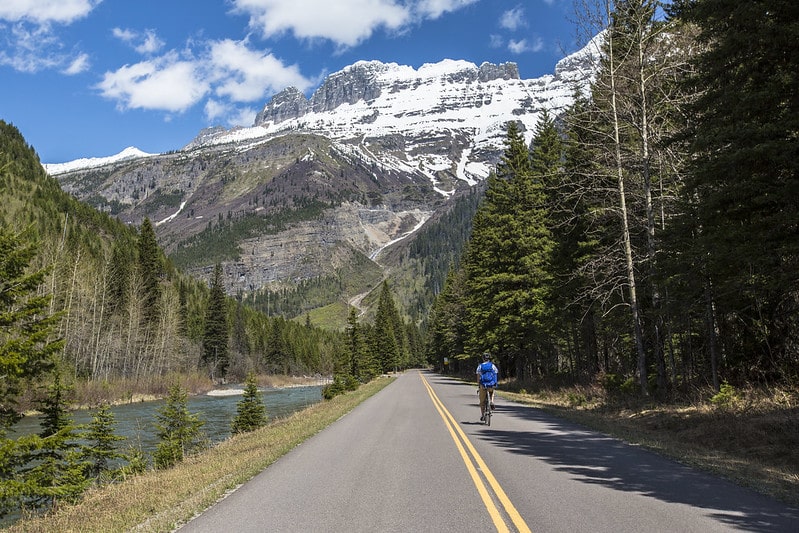
17. A number of these “jammers” were converted to operate on alternative fuel. Numerous repeat park visitors have stated that the best part of their experience was their tour along Going-to-the-Sun Road in the classic Jammer bus, while the wind blew through their hair.
18. Avalanche Creek is one of the many unique landmarks along Going-to-the-Sun Road. It is the overlook for big Jackson Glacier and home to the unforgettable ancient hemlock-cedar forest, a roadside Weeping Wall and a dreadful switchback known as the Loop.
19. St. Mary is located to the east of Going-to-the-Sun Road. Along with cabins, a lodge, and a number of eateries, there is another visitor center.
20. Archaeological evidence has revealed that human beings have occupied this landscape from 12,000 years ago since the retreat of the Ice Age glaciers. These mountains are still spiritually significant for the local Kootenai, Salish and Blackfeet Tribes.
21. The largest glacier in the park out of the existing 26 is Blackfoot Glacier. It measures in at 0.7 square miles.
22. Chief Mountain has, for centuries, helped with defining Blackfeet territory. The Blackfeet People regard it as a mountain of great power and ancient knowledge. It is located half in the east of Blackfeet Reservation and half in Glacier.
23. Two Medicine, which is located right outside East Glacier, is a magnificent but lesser-known section of the park. This is the location in which the Blackfeet undertook revered rites of passage.
24. Near this location, tour trails meander along a creek and around three lakes to get to Running Eagle Falls; the falls streams through an enormous stone orifice.
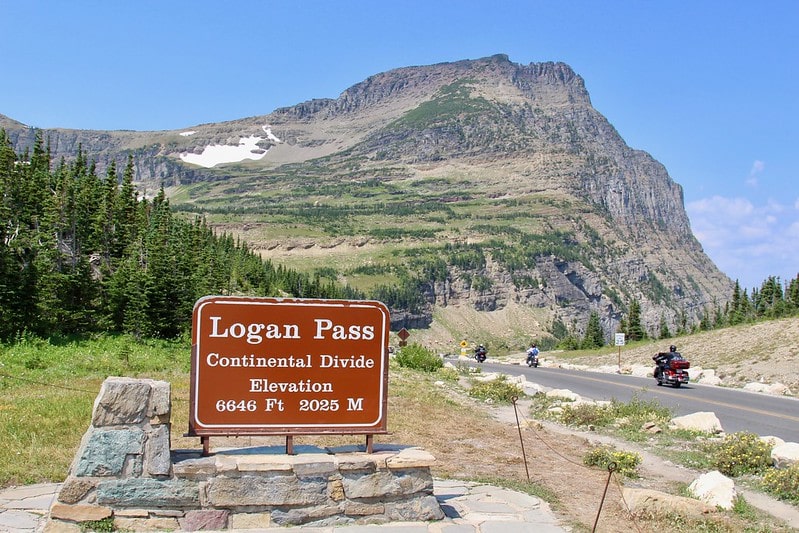
25. A total of 175 mountains are in Glacier National Park. Mount Cleveland is the tallest of them all and stands at 10,448 feet. Logan Pass follows at 6,646 feet and is the highest point on the famous Going-to-the-Sun Road.
26. Triple Divide Peak is renowned for directing water to the Arctic, Atlantic and Pacific oceans. The Northern Divide and Continental Divide, which flow to these oceans, converge at the summit of the peak. This indicates that the water that falls on Triple Divide Peak will eventually end up in those three mountains.
27. More than 100 million visitors have passed through Glacier National Park. Over the past few years, the annual visits to the park has been increasing and in 2016, there was a record high of 2,946,681 visitors.
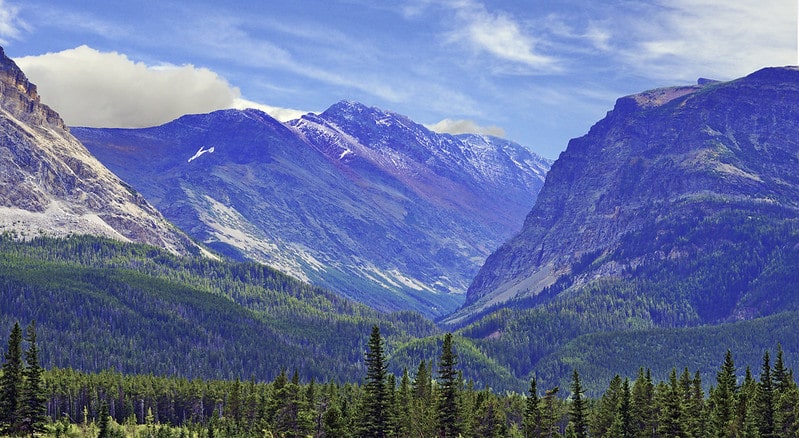
28. Many Glacier is viewed as being the heart of the park and provides visitors with active glaciers, vast mountains and hiking trails. This makes it a well sought after destination of locals and visitors alike.
29. The popular hikes include a 5.5-mile trail to the base of Grinnell Glacier, a strenuous climb up to Swiftcurrent Pass (6.6 miles), and a relatively easy jaunt to Ptarmigan Falls (2.5 miles).
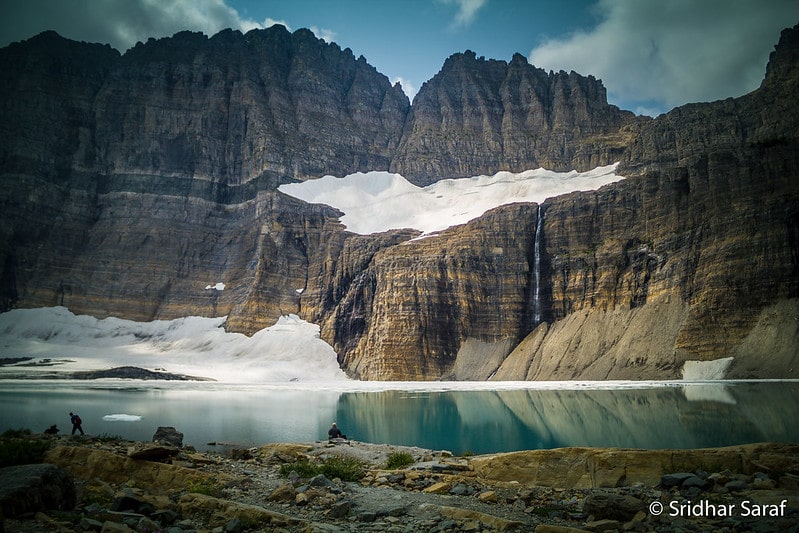
30. Glacier holds over 700 miles of hiking trails. Over half of the visitors to Glacier National Park hit the trail to see some of the outstanding scenic views the park has to offer. With opportunities for both long backpacking trips and shorter hikes, there is something for everyone. Hiking not your thing? From biking and fishing to cross-country skiing and red bus tours, there’s plenty to do at Glacier.
31. Glacier’s wildlife has hardly changed since it was first discovered. Home to 71 species of mammals, Glacier’s ecosystem has essentially remained intact and undisturbed. This is mostly because of its large acreage and early protection efforts, but nonetheless the park’s preservation of species since early European explorations is quite impressive.
32. There are also 276 species of birds in the park and a total of 1990 documented species of plants. Visitors flock to wildlife tours and frequent sightings occurs in the warmer month of spring and summer.
33. There is documentation of 7 non-native and 18 native species of fish.
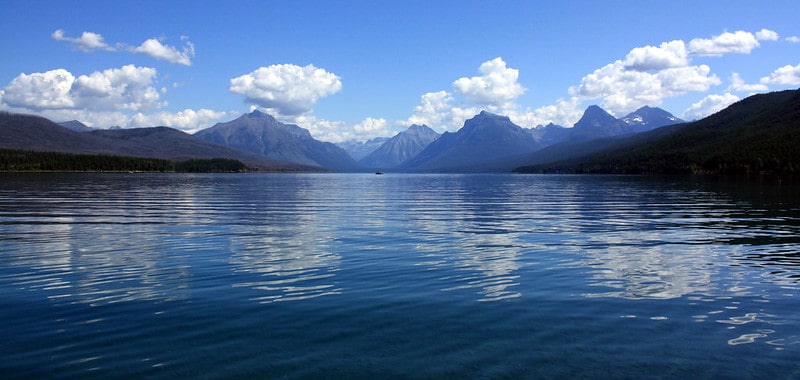
34. Remarkably, there are 762 lakes in this park but only 131 are named. Lake McDonald is the largest of them and it measures 472 feet deep, 1.5 miles wide and 9.4 miles long.
35. Lake McDonald is not viewed as a prime fishing lake; however, visitors enjoy going there to see the many wild animal inhabitants. These include mule deer, black bears and moose. Additionally, the park has 2,865 miles of streams and Upper McDonald Creek is the longest at 25.8 miles.
36. Many visitors flock to Lake McDonald largely because the clear blue lake is bordered by high peaks, which makes it quite the scenic spot. The most striking feature of the lake are the colored rocks in blue, green and red.
37. Since the 1920s, wooden boat tours have been featured at Glacier and several of the original boats are still cruising today. Sinopah is one of the oldest and this 45-foot vessel takes visitors through Two Medicine Lake. There is also Little Chief, which is a 49-passenger boat located on Saint Mary Lake.
38. There are picturesque boat tours of Lake Josephine and Swiftcurrent Lake which incorporate a quarter-mile hike between the lakes. Rowboats, canoes and kayaks are available to rent.

39. The park has a diverse array of flora and fauna and as such, it has been referred to as the “Crown of the Continent.” This name was coined by George Bird Grinnell, a historian and naturalist who led the efforts to establish the park early in the 20th century.
40. On average, between January and mid-March, the park gets an annual snowfall of approximately 138 inches and the average depth is 20 inches.
41. The park has a dark history of wildfires. There were 64 fires recorded in 1936 and there was a terrible fire season in 2003, when 13 percent of the land went up into flames.
42. Goat Haunt is situated along Waterton Lake and is viewed as the hub of Waterton-Glacier International Peace Park. Sightseers who wish to cross the border into either Canada or the U.S. must present their ID before a mountain goat-shaped stamp is made in their passports.
. . . continue reading on the next page
